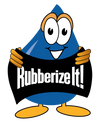Dura-Rubber liquid rubber coating is a fast-working, single-part sealant that’s both tough enough for professional use and easy enough for anyone to apply.
Colors may vary slightly due to individual screen settings and display differences.
We tint to order generally takes 48 hours before shipping.
✓
✓
✓
✓
✓
✓
✓
✓
✓
✓
✓
✓
✓
✓
✓
✓
✓
✓
✓
✓
✓
✓
✓
✓
✓
✓
✓
✓
✓
✓
✓
✓
✓
✓
✓
✓
✓
✓
✓
✓
✓
✓
✓
✓
✓
✓
✓
✓
✓
✓
✓
✓
✓
Selected Color: Choose color
Frequently asked Questions
Product Application Photos





















